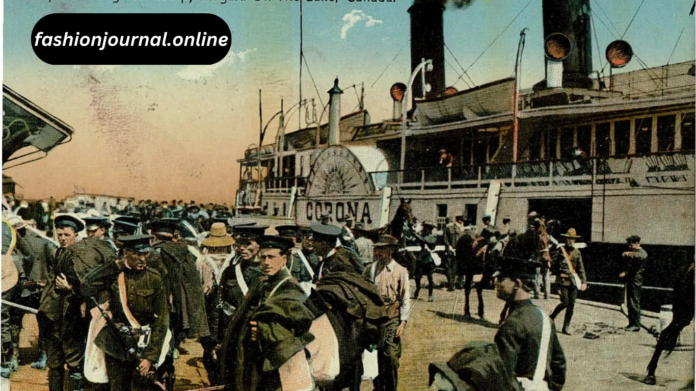Fashion tells a story, doesn’t it? It’s a reflection of the times, a blend of creativity and necessity. When we dive into 1915, we’re stepping into an era shaped by monumental global events and cultural shifts. Let’s explore how clothing choices in this year went beyond mere aesthetics, embodying resilience, practicality, and the unique spirit of the age.
Historical Context of 1915
World War I’s Impact on Fashion
In 1915, the world was in the throes of World War I, and this seismic event left its mark on nearly every aspect of daily life—including fashion. Materials like silk and leather were redirected toward the war effort, prompting designers to innovate with available resources. Women’s clothing, for example, became more practical to accommodate their newfound roles in the workforce, shifting away from the restrictive corsets of previous decades.
Women’s Role Transformation
With men on the battlefield, women stepped into roles that had been traditionally male-dominated. This societal shift necessitated functional clothing, such as simpler dresses and skirts that allowed ease of movement. It marked a pivotal point where fashion began aligning more with practicality than ornate decoration.
Key Trends of 1915 Fashion
Women’s Fashion Trends
Daywear and Eveningwear
Daywear in 1915 focused on simplicity and function. Hemlines rose slightly to make walking easier, and high necklines provided modesty. Eveningwear, on the other hand, retained an air of elegance with flowing fabrics, intricate beadwork, and subdued pastel colors.
Fabrics and Colors
Popular fabrics included wool, cotton, and linen, chosen for their availability and practicality. Color palettes leaned toward muted tones like navy, gray, and khaki, reflecting the somber mood of wartime.
Men’s Fashion Trends
Military-Inspired Clothing
Men’s fashion of the time borrowed heavily from military uniforms. Trench coats became a staple, offering a rugged yet refined look.
Formal and Casual Wear
Three-piece suits with waistcoats were the norm for formal occasions. Casual wear, though less common, included lighter materials and simpler cuts, signaling the gradual relaxation of rigid dress codes.
Children’s Fashion
Children’s clothing often mirrored adult styles, albeit with playful elements. Girls wore pinafores and lace collars, while boys sported sailor suits—a nod to military influence even in the youngest generation.
Accessories and Footwear
Women’s Accessories
Accessories in 1915 were essential to completing an outfit. Wide-brimmed hats adorned with ribbons or flowers were a must-have, while gloves and delicate jewelry added an air of sophistication.
Men’s Accessories
For men, pocket watches symbolized both practicality and status. Hats, ranging from bowler hats to flat caps, were also crucial elements of a well-dressed man’s wardrobe.
Fashion Icons and Influencers
The designers and celebrities of the time played a pivotal role in shaping trends. French couturiers like Coco Chanel began introducing relaxed yet elegant designs that challenged traditional norms. Meanwhile, public figures and actresses often set the tone for what was considered fashionable.
Regional Variations in 1915 Fashion
Fashion wasn’t a one-size-fits-all affair. While European styles leaned toward practicality due to wartime constraints, American fashion began adopting slightly bolder trends. Meanwhile, in Asia and Africa, traditional attire continued to thrive, blending with elements of Western influence in subtle ways.
The Legacy of 1915 Fashion
The innovations of 1915 laid the groundwork for modern fashion. The move toward practical, adaptable clothing signaled a departure from the rigid constraints of the past, paving the way for the dynamic, versatile styles we see today.
Conclusion
1915 was more than just a year; it was a turning point in the history of fashion. Amidst global turmoil, clothing became a canvas for resilience and adaptability. The trends of the time weren’t just about looking good—they were about embracing change and pushing boundaries. Whether it’s the military-inspired trench coat or the timeless elegance of simpler designs, the echoes of 1915 still resonate in our wardrobes today.
FAQs
What were the main fabrics used in 1915 fashion?
Wool, cotton, and linen were the most common fabrics due to wartime resource constraints.
How did World War I affect women’s clothing?
Women’s clothing became more practical, with simpler designs and functional features to accommodate their active roles in society.
What accessories were popular in 1915?
Wide-brimmed hats, gloves, and pocket watches were staple accessories for women and men alike.
Did children’s fashion in 1915 differ from adults’?
Children’s clothing often mimicked adult styles but included playful elements like lace collars or sailor themes.
What is the lasting legacy of 1915 fashion?
The practical and adaptable styles of 1915 influenced the modern approach to clothing, emphasizing functionality alongside aesthetic appeal.

